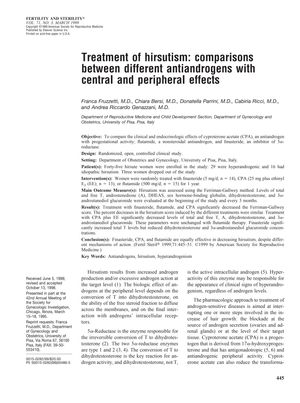Treatment of Hirsutism: Comparisons Between Different Antiandrogens with Central and Peripheral Effects
March 1999
in “
Fertility and sterility
”

TLDR Finasteride, CPA, and flutamide are all equally effective in reducing excessive hair growth in women.
In a study conducted at the University of Pisa, Italy, 45 hirsute women, of whom 29 were hyperandrogenic and 16 had idiopathic hirsutism, were treated with different antiandrogens to compare their effects on hirsutism. The randomized, open, controlled clinical study assessed the efficacy of cyproterone acetate (CPA) with ethinyl estradiol (EE), flutamide, and finasteride over a period of 1 year. Three participants dropped out, leaving 14 in the finasteride group, 13 in the CPA group, and 15 in the flutamide group. All treatments significantly decreased the Ferriman-Gallwey score, which measures the severity of hirsutism, with similar percent decreases across the treatments. CPA plus EE also significantly reduced levels of total and free testosterone (T), androstenedione (A), dihydrotestosterone, and 3α-androstanediol glucuronide, while flutamide did not change these parameters. Finasteride increased total T levels but decreased dihydrotestosterone and 3α-androstanediol glucuronide concentrations. The conclusion was that finasteride, CPA, and flutamide are equally effective in reducing hirsutism, despite their different mechanisms of action.


